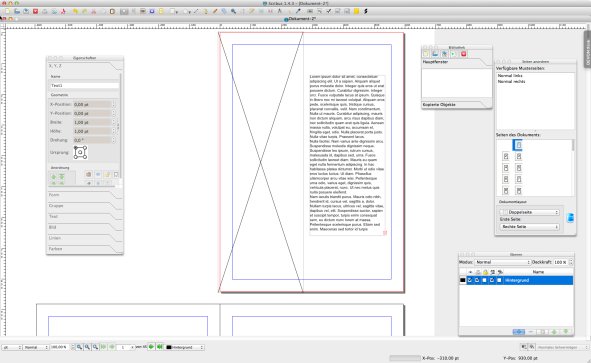


Hi there, I've had the exact same issue in 2023 with version 1.4.8. This worked for me, but I still have no clear idea why. TLDR: Save a copy of your document, and open the copy. (One more option: the directory contains "invalid" characters, but this nowadays rather unlikely, since almost every character should now be valid.)Īs Jonas wrote in a comment below, "Extra > Manage Images" is a good tool in Scribus to check the paths to the images. If you see a red X this a huge hint that the address of the image is not (anymore) correct. You might have move the images, renamed them, renamed a directory in the path leading to the image or ejected the external drive where they are.īy default, Scribus is only linking to the images (for very good reasons!) and you have to make sure that it can find them at the very moment when you open the Scribus file. If you're sure that the image is "normal" Jpeg, I fear that I would need a sample image to help you further.Īfter you reply and comment, there is a second possible why you don't see the images. If this does not bring you further, my next guess would be that the scanner is saving the images in a format that Scribus does not support (and is probably not Jpeg there are a lot of "esoteric" version of Jpeg and not all of them are supported by Scribus: that is also possible). To check if this is your issue, select the image frame, open the Properties Palette ("Window > Properties"), click on the "Image" tab and then activate "Scale to frame size". When the image as at high resolution and if you have not told Scribus to automatically scale your images, you will only see one small part of the image. However, when I try and export this draft to PDF, the very first previously questionable image comes up as missing and so the export stops then!Ĭould it be that you only see the top left corner? There are about 6 missing (now with a big red X on most of them). Most of the images are appearing on screen now. Horizontal and Vertical resolutions are blank They were all around Width 4852 Height 7020 Many were scanned handdrawn A4 pages ranging from 2.37 - to over 6mb The printer company I'm going to use scanned in all of the images I'm having a probem with. Thanks so much for the reply checked the image scaling but that isn't the problem. Has anyone any ideas about what I could be doing wrong? Actual photograph Jpegs are inserting fine. These are files which have been scanned and saved as Jpegs. Then preview mode a number of Jpegs which were looking perfect suddenly disappear. There seems to be no reason why some work and some don't. Some images are appearing but then some will not.

I can insert an image frame, select a jpeg image and frequently it's just not appearing.
SCRIBUS FOTOBUCH FREE
A truly exceptional free publishing tool.Hi I'm new to Scribus but have been working through my first document well. Scribus is extremely impressive – its only drawback being limited support for proprietary file types, which is a result of Adobe using licensed technology.
SCRIBUS FOTOBUCH FULL SIZE
You can add your own fonts quickly and easily, and work with scripts using premade scripts to do things like automatically enlarge an object to the full size of a page.
SCRIBUS FOTOBUCH PROFESSIONAL
Further complexity can be added in the form of layers, with frames set on top of one another, and Scribus also boasts professional publishing elements such as colour separations, CMYK and spot colours. Once you lay all these down, you can then resize or shift things about so everything looks good. Text frames carry your written content, image frames are for pictures, and there are other shape/line frames to make fancy graphics with (graphs and pie charts can be inserted, for example). You begin with a blank slate of workspace, called the document, and into this you can place objects, the majority of which are frames. It makes sense – Adobe's approach works very well, so why reinvent the wheel? Scribus will take a little whole to master if you've never used a similar program before, but if you're used to InDesign's system of frames and layers, there learning curve is pretty much non-existent.


 0 kommentar(er)
0 kommentar(er)
